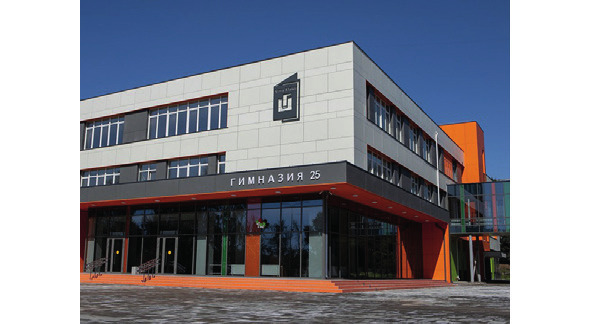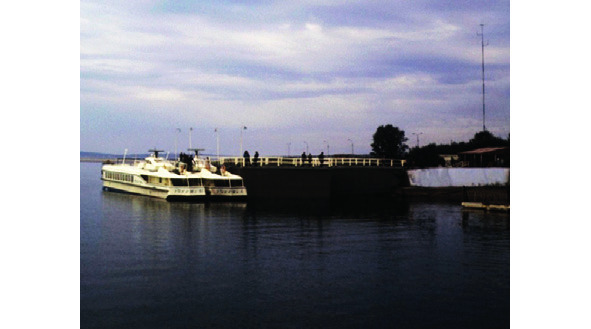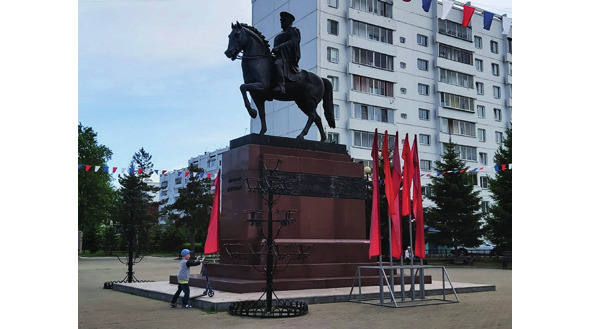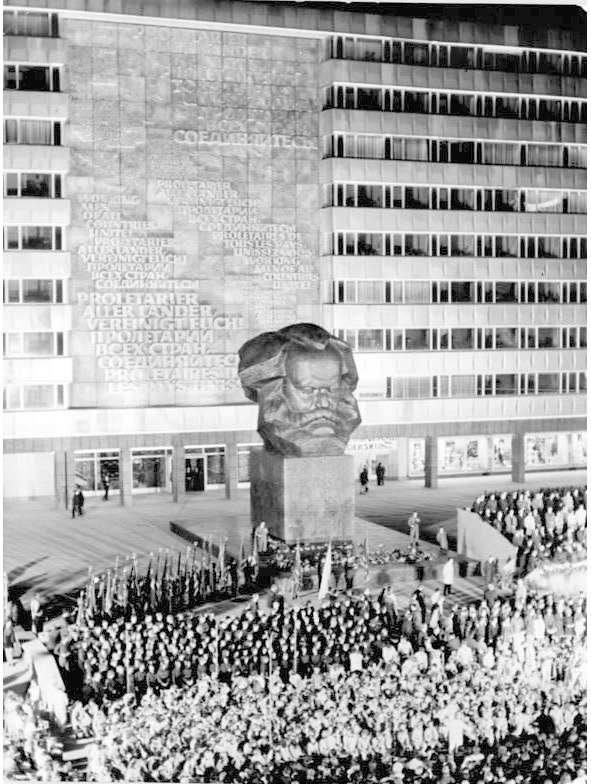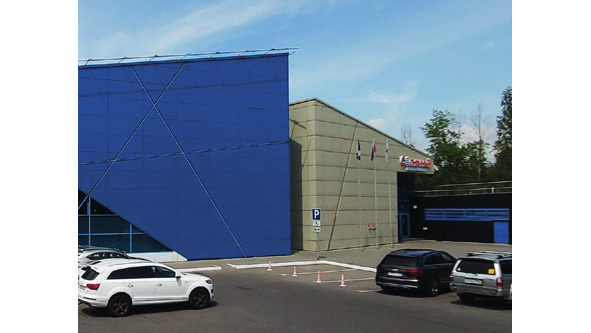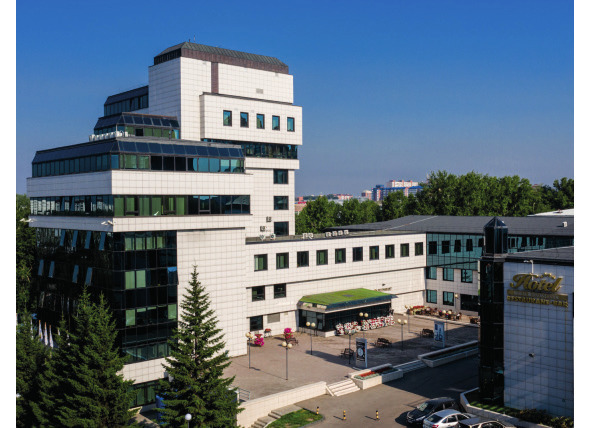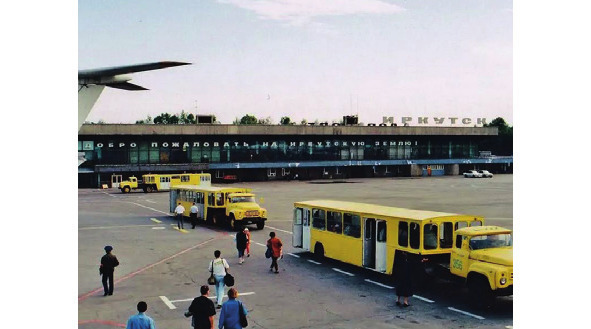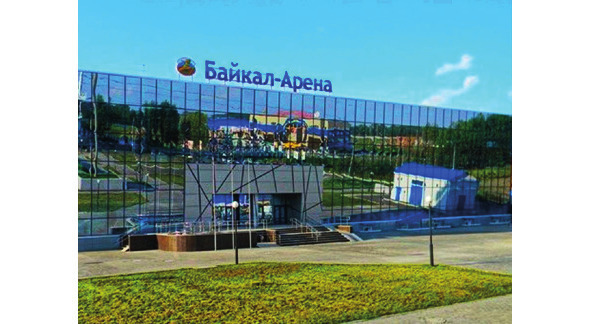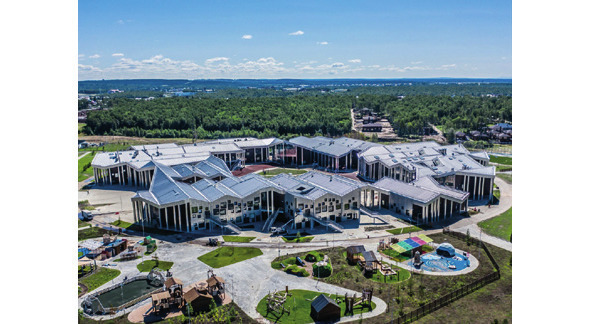
Полная версия
The most detailed guide around Circum-Baikal Railroad: Irkutsk, Listvyanka, Slyudyanka, Shelekhov
Institute of Solar-Terrestrial Physics SB RAS
A little higher along Ulan Batorskaya Street there are two more institutes. The first of them is the Institute of Geography of the SB RAS named after V.B. Sochava, established in 1960 on the basis of the oldest department of the Geographical Society in Siberia (Ulan-Batorskaya Str., 1). The institution conducts research on the basics of sustainable development of natural geosystems and their components in accordance with the tasks of modern mankind. Over the years of work, mapping of nature, economy and population of various regions of Asian Russia, as well as neighboring countries, has been carried out.
Institute of Geography SB RAS
The second of them is the Limnological Institute, which appeared on this place in 1989 (Ulan-Batorskaya Str., 3). The scientists of this institution are studying Lake Baikal, which in many respects served as the basis for the creation of serious science in Siberia. Actually, already in 1897 an attempt was made to create a limnological station in the village of Bolshoe Goloustnoye, thanks to the efforts of the geophysicist V.B. Shostakovich. At least, in 1930 G.Y. Vereshchagin established a station in the village of Listvyanka, which is still in operation. A few years ago, in front of the institute building, the abandoned research vessel called «Chayka» lay on its side, which stood at the origins of the development of science in Siberia.
Institute of Limnology SB RAS
Next, we will drive along Lermontova Street to a small square near the residential complex «Progress» on the left side of the road (Lermontova Str., 267/1), where in 2018, on the occasion of the 55th anniversary of Akademgorodok, as conceived by the City Duma deputy A.V. Safronov, a memorial sign appeared in the form of a globe, based on eleven columns, symbolizing institutions. The paving of the site around is made in the form of a labyrinth with several entrances, as a symbol of the search for scientific knowledge.
Square of the 55th anniversary of Akademgorodok
Below the square is the Children’s Art School No. 5, which in 2008 moved to this new building (Lermontova Str., 271Б). Graduates of this institution since its founding in 1969 have been awarded a variety of prizes and awards, constantly taking prizes in the competitions «Gems of Siberia», «Rising Star», «Golden Phoenix», «Hope».
Behind it you can see the new building of school No. 19, which opened in its original place in 2018 after a complete reconstruction (Lermontova St., 279). Today it is the best in the city in terms of equipment. It offers students two swimming pools, a training range, a conference room, equipped classrooms, elevators, the latest sports hall and even the largest school planetarium in Russia with a dome diameter of 11 meters with eight projectors and a capacity of more than 100 people.
School No. 19
If we drive further, then on the other side of the street we will see the next large building – this is the oldest academic institution of the geological profile and the firstborn of serious science in Siberia – the Institute of the Earth’s Crust (Lermontova Str., 128). It arose on the basis of a local scientific school in 1949. Today, geology is studied here not only in Central Asia, but also in Europe, North America, Australia, Africa, and Antarctica. The organization controls 23 seismic stations located in the mountain belt from the Eastern Sayan to the Olekma river valley. Over the years of research, employees have discovered 15 new minerals. The names of some of them contain the names of the leading scientists of the institute and the bright events of its history (florensovite, natalite, odintsovite, zemkorite, azoproite, and many others).
Institute of the Earth’s Crust SB RAS
A little further, at the intersection with Favorskogo Street, we see the Institute of Energy Systems SB RAS named after Academician L.A. Melentiev (Lermontova Str., 130). Since 1960, they have been developing a strategy for the development of domestic and world energy, introducing new laws and methods for keeping the safety of resources, and ensuring the constant development of the fuel and energy complex.
Institute of Energy Systems SB RAS
Between these institutes, up the slope, there is the Irkutsk Institute of Chemistry named after A.E. Favorsky, founded in 1957, the building of which became the first scientific building built in Akademgorodok in 1963. The institution conducts research in the field of creating useful products from fossil fuels, mainly through acetylene and its derivatives containing various elements, based on which it is possible to synthesize almost everything that is produced today by the chemical industry (Favorskogo Str., 1).
Institute of Geochemistry SB RAS
On the same line on the hill, hiding its contemporary the Institute of Geochemistry named after A.P. Vinogradov. Over the years of its work, many features in the history of the evolution of the Siberian Platform have been identified, forecasts have been made about the development of the climate on the planet based on paleoclimatic studies, and the most major developments for electronics, medicine and ecology have been created (Favorskogo Str., 1A).
On the other side, near the larch alley, there is the Siberian Institute of Plant Physiology and Biochemistry, founded in 1961. Research is being carried out in the field of bioengineering and biotechnology, new species of plants and fungi are being created, and rare and endangered ones are preserved in the regional seed bank. The organization operates the oldest phytotron in Russia, as well as a magnificent greenhouse available for visiting (Lermontova Str., 132).
Greenhouse in Siberian Institute of Plant Physiology and Biochemistry
On the right side of Lermontov Street, the Institute of System Dynamics and Control Theory named after Academician V.M. Matrosov. It was created in 1980 on the basis of the Department of Systems Theory and Cybernetics. Within the walls of the institute, fundamental research is carried out in the interests of designing space and aviation technology, and effective methods for managing complex systems are being created. It was here that in 1994, for the first time in Russia, an Internet network was launched for the needs of Akademgorodok (Lermontov Str., 134).
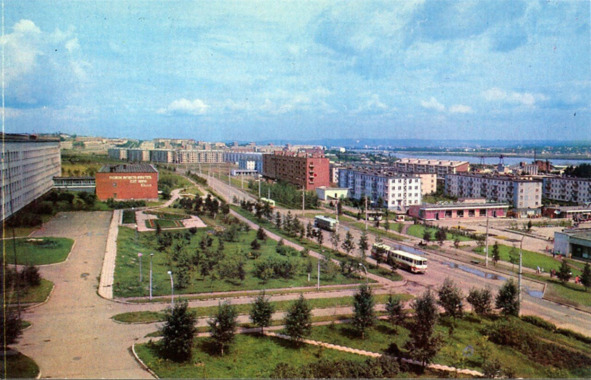
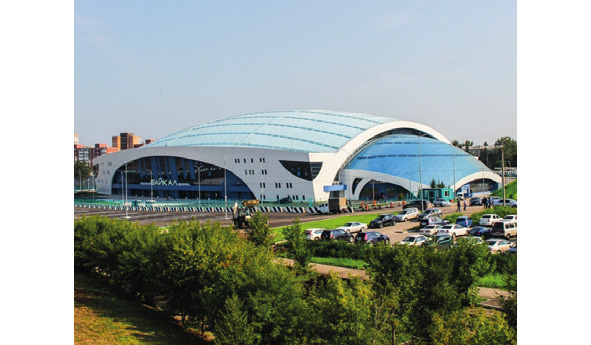
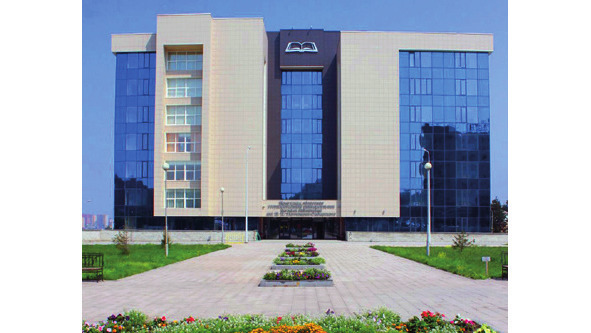
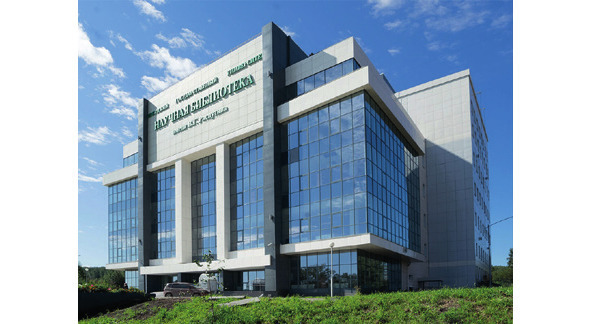
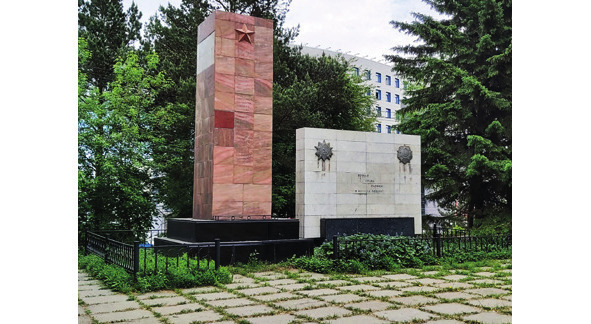
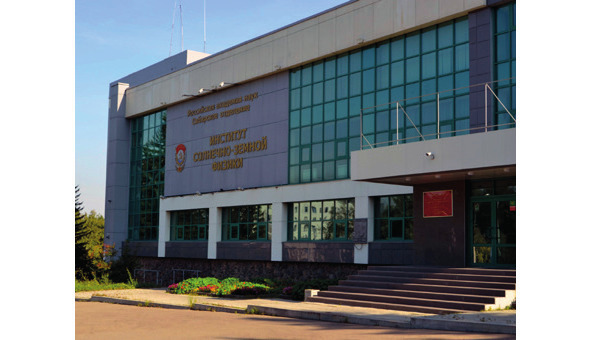
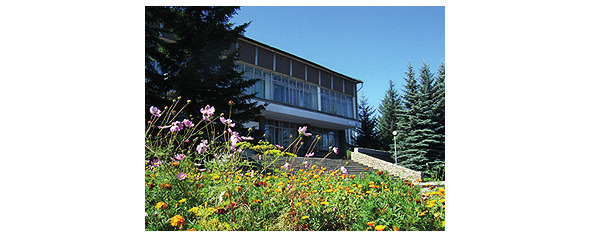
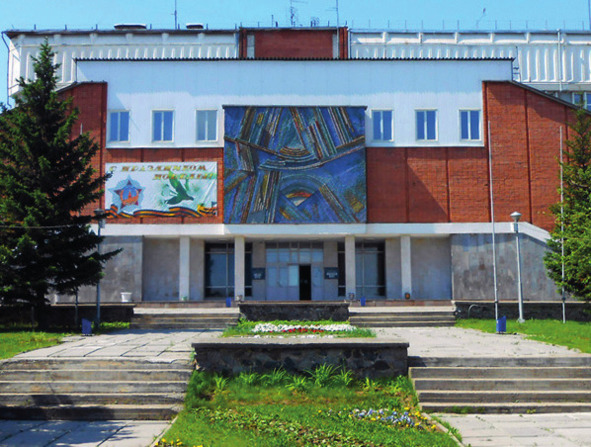
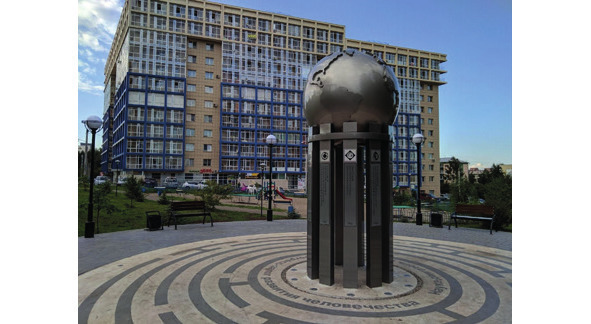
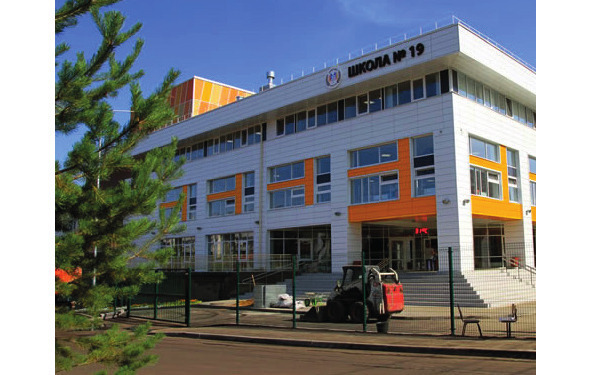
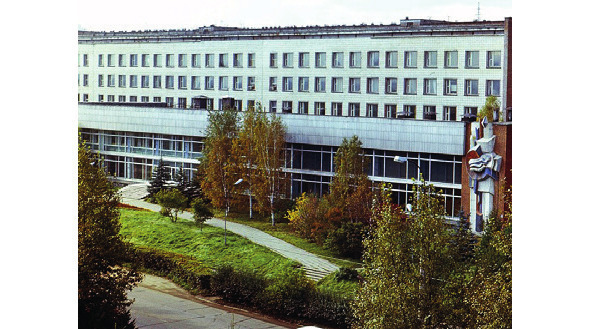
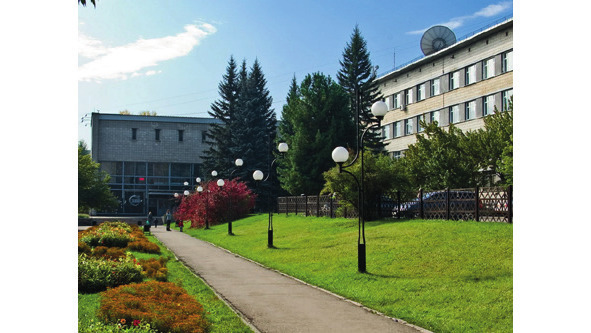
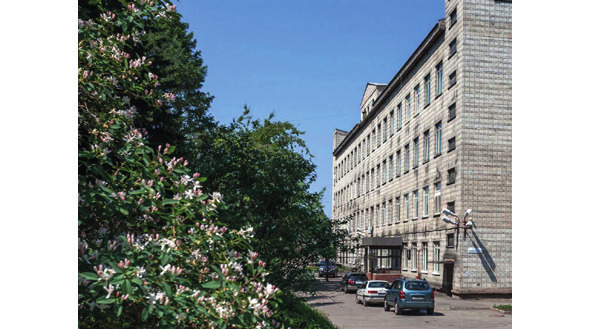
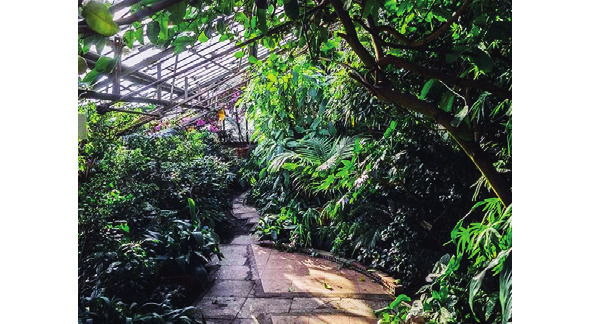
Energetikov Village
Having overcome the Malaya Kuzmikha river through a barely noticeable concrete tray, we find ourselves next to the intersectoral scientific and technical complex «Eye Microsurgery» named after the outstanding ophthalmologist of the 20th century academician S.N. Fedorov (Lermontova Str., 337). It appeared here in 1989, since then more than a million examinations have been carried out here, more than 700 thousand people have been operated on.
Eye Microsurgery Complex
Previously, in the floodplain of the Malaya Kuzmikha river, there was a cemetery of the village of the same name. Downstream, towards the Angara, there was a magnificent rotunda church in the name of St. Nicholas the Wonderworker. It was built in 1822 according to the project of Y.A. Kruglikov and at the expense of the son of the Yaroslavl landowner, lieutenant A.P. Shubin, who was demoted and exiled to Kuzmikha in 1814, where he fell in love with the young daughter of a poor Cossack. Having received forgiveness, he restored with the officer rank of cornet and filed a petition for the construction of a temple in Kuzmikha in 1819. In the 1970s, the building was demolished, and today the trade center «Capitel» is located in its place (Staro-Kuzmikhinskaya Str., 41/2). In addition, in 1884 a cemetery chapel was built in the village. Near the place where it was, today the building of «Eye Microsurgery» rises.
St. Nicholas Church-rotunda in Kuzmikha, early 20th century
Then we will drive along Lermontova Street to the intersection with Akademicheskaya (Akademicheskaya Str,. 1A). We will turn left at the trolley bus depot, which has been working here since 1970. During this time, almost half a billion passengers have been transported, 10 routes are in operation. Previously this part of Lermontova Street had been a dense forest.
We go down to the floodplain of the Bolshaya Kuzmikha River, which gave its name to a small village located in this part of the Angara. During the construction of seven villages of hydroelectric power station builders, this settlement merged with Irkutsk and today only Starokuzmikhinskaya Street reminds of it. In 1839 the Decembrist A.P. Yushnevsky was assigned to the settlement here, and later moved to his friends in Bolshaya Razvodnaya on the other side of the Angara River.
Decembrist A.P. Yushnevsky (1786—1844)
In the area of the modern car workshop «Kuzmikha» you can still see the remains of the old Trans-Siberian railway embankment (Staro-Kuzmikhinskaya Str., 81Б), built here in 1898. Moreover, 5.5 km of the odd track with 6 single-span stone bridges survived. Nowdays it goes from Irkutsk-Passenger station to the prefabricated concrete plant, which has been operating here since 1959 and was originally built for the needs of the construction of the Irkutsk hydroelectric power station (Staro-Kuzmikhinskaya Str., 91). Now the rails rest against the 45-meter embankment of the dam. The old line of the Trans-Siberian after the pound rests at a depth of more than 20 meters in the waters of the Angara River.
Armored train on the bridge over the river Kuzmikha, 1920
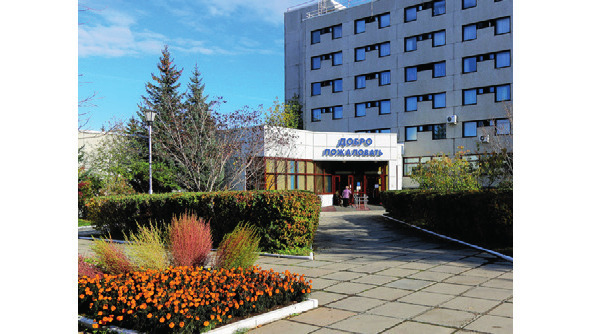
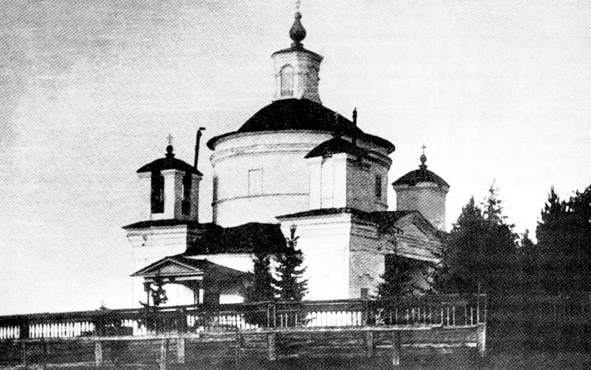
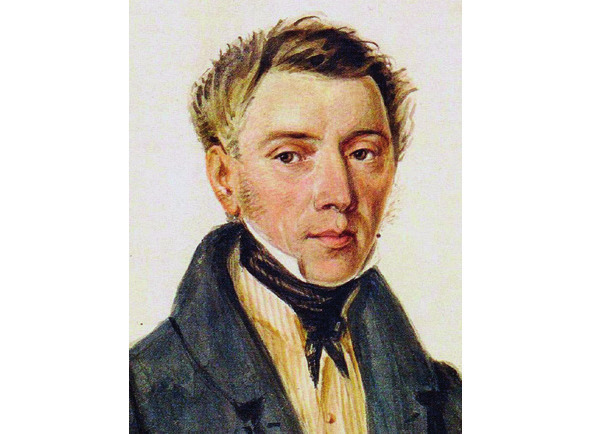
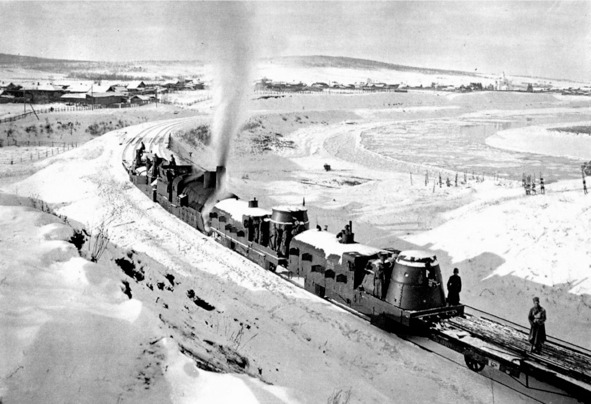
Primorsky Microdistrict
Further along the right side of Akademicheskaya Street, we pass the «Dom Kino» stop, where the East Siberian Newsreel Studio has been based since 1963 (Mukhinoy Str., 2A). Today it is the only venue in Irkutsk where you can see intellectual and auteur films on the screen, as well as meet directly with filmmakers. The storage funds contain more than 2 thousand film magazines «Eastern Siberia», about 400 documentaries, digitized and available to everyone.
East Siberian Newsreel Studio «Dom Kino»
Below us on the right hand remains the microdistrict Yubileiniy, founded in 1967 and named in honor of the 50th anniversary of the October Revolution. Since 1986, the main attraction of this part of the city has been the Irkutsk Regional Clinical Hospital with a perinatal center and Orthodox parish in honor of the Nativity of John the Baptist (Yubileiniy mikrorayon, 100).
Church of John the Baptist in Yubileiny microdistrict
At the roundabout, we turn left onto Zakharova Street, which should lead us to the causer of the disappearance of the old Trans-Siberian Railway – the Irkutsk hydroelectric power station. In a small park on the right hand, one of the few churches on this bank of the Angara is hiding – the Church of Saint Alexander Nevsky, which was built in 2000 at the expense of the director and founder of the Folk Drama Theater M.G. Kornev (Yakobi Str., 3).
Church of Saint Alexander Nevsky
At the traffic light at the intersection with the street named after the Hero of Socialist Labor and the builder of the Irkutsk hydroelectric power station A.E. Bochkin, an alley goes up, planted by students of school number 64 in memory of the Great Victory. If you walk along it down to the Angara River, you can go to the only official beach in Irkutsk, named after the German physicist who made the first electric motor – B.S. Jacobi.
Before us appears the first serious hydroelectric power station in the history of Siberia. It is the least powerful (662.4 MW) in the most mighty hydropower complex in Russia – the Angarsk HPP cascade (Irkutskaya, Bratskaya, Ust-Ilimskaya, Boguchanskaya), whose total capacity is almost 12 thousand MW with an average annual output of 66 billion kWh (6% of the total consumption in the country). After the completion of the filling of the Irkutsk reservoir in 1959, the deepest (1642 m) and largest in terms of water volume (23,616 km) reservoir in the world was formed. Perhaps that is why Irkutsk residents pay the least in Russia for 1 kW of energy (1.3 rubles for city dwellers and 0.91 for villagers). 3
Irkutsk Hydroelectric Dam
As a result of blocking the natural channel of the Angara River, the level of Baikal rose by 1.46 m, swallowing up all the islands between Irkutsk and the lake, as well as part of the Trans-Siberian Railway, for which a backup line had been built by that time. More than 200 settlements with 17 thousand people were in the flood zone.
On the right, at the en-trance to the dam, one of the three monuments to V.I. Lenin in Irkutsk, installed here in 1959 by the Moscow sculptor P.P. Yatsyno (author of the monument to the leader of the world proletariat at the park of Exhibition of Achievements of National Economy in Moscow). We will cross a dam along a 2.7 km long road, which is still unique for our country, because for the first time in world practice the construction was carried out from gravel and sand (almost 12 million m), and the power plant building was combined with the body of the dam. From here, the main part of the water intake for the needs of the city is made. 3
Monument to V.I. Lenin at the hydroelectric power station, 1960s
At the end of the dam, the oldest metal icebreaker in the world – «Angara», froze on a concrete bed (Marshala Zhukova Prosp., 36A/1). It appeared on this site as a museum in the perpetual parking in 1990. This ship made its first voyage back in 1900 and since then has carried passengers of the Trans-Siberian Railway, participated in combat battles during the Civil War in Russia, ran aground three times, five times sank. Despite this, the engines of English assembly are still in excellent condition, and the ship is able to return to navigation, which was interrupted in 1963 only for moral reasons.
Icebreaker Angara, early 20th century
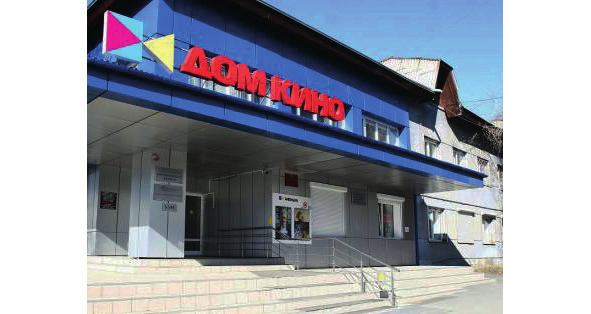

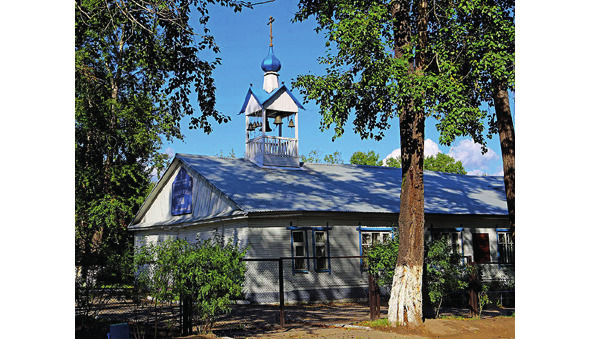
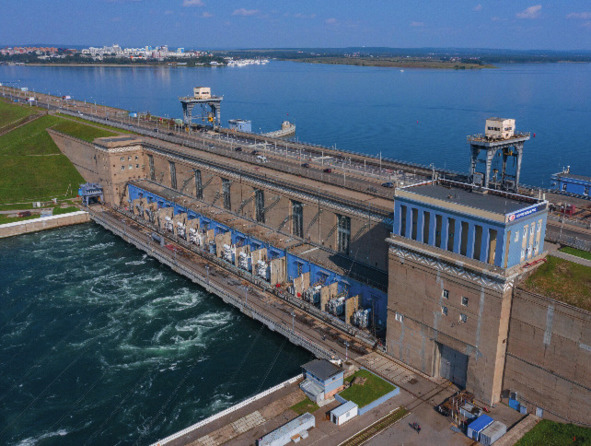
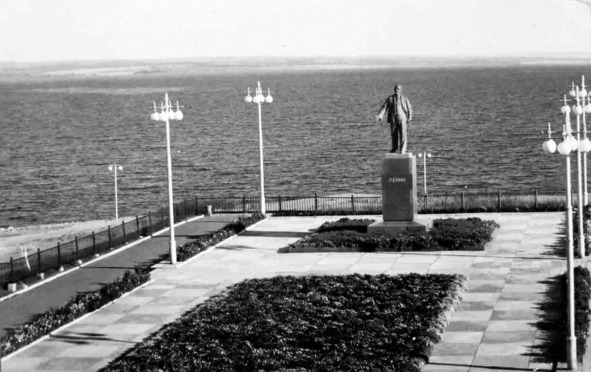
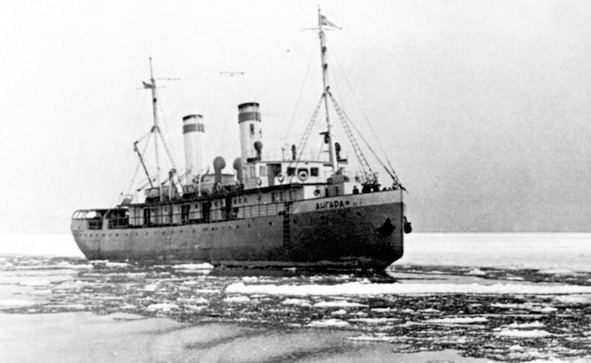
Solnechniy Microdistrict
Opposite the ship, across the road, you can see one of the youngest and most famous schools in Irkutsk – the experimental education center No. 47 (Marshala Zhukova Prospekt, 36), which has been operating since 1991. Nearby is the not less famous gymnasium No. 25 of Irkutsk city, built in 1982. In 2001, it was awarded the title «School of the Century» (Marshala Zhukova Prospekt, 2). Among its graduates, the composer D.G. Grigorutse, winner of the World Cup in sports aerobics E.N. Samozvanova, Doctor of Medical Sciences P.V. Seliverstov.
«School of the Century», gymnasium No. 25
From here we begin our acquaintance with one of the youngest microdistricts of the city of Irkutsk – Solnechny. Let’s proceed to the shore of the Chertugeevsky Bay of the Angara River, where today the main pier of Irkutsk is located called «Rocketa» (Marshala Zhukova Prospekt, 98Г), which arose on this site in 1975 right on the outaskirt of the old village Malaya Razvodnaya flooded by the waters of the reservoir. Until 2017, from here it was possible to get to the northern tip of Lake Baikal in 12 hours, covering a distance of almost 600 km, using the «Kometa» hydrofoil motor ship. Here is also a yacht club of the European level – «Pearl of Baikal».
Pier «Rocketa», 1980
Through an ingenious road junction, we get to Marshal Zhukov Prospekt, where in 2005 to the four times Hero of the Soviet Union was built a monument by the most famous sculptor of Republic of Buryatia, A.M. Mironov. In 2002, when laying the foundation, a shell of a 76-mm whizbang was laid with an appeal to descendants, which is planned to be opened by the 100th anniversary of the Great Victory in 2045.
Monument to G.K. Zhukov
Directly from the monument begins the alley of military glory of Irkutsk with six monoliths, on which the contribution of the region to the defeat of fascism is described. At the end of the alley is the creation of V.A. Pavlov – a dormitory with a dental clinic No. 1 (Marshal Zhukov Prospekt, 70Б), built in 1983. The author himself gave more than 20 years to the capital of Eastern Siberia and is still among the 50 best architects of the 20th century according to the World Triennial of the International Union of Architects. On the other side of the avenue is another interesting project by V.A. Pavlov – «house-ship» (Marshal Zhukov Prospekt, 1), gallery type with an elevator shaft took outside the building, constructed in 1983.
«House-ship», 1980s
The history of the avenue itself is interesting, since until 1997 this street was called Karl-Marx-Stadt, after the Soviet name of the third largest city in the GDR – Chemnitz, which maintained twinning relations with Irkutsk from 1967 to 1999. It was German students who built this wide highway in 1974. In memory of twinning relations, the house of culture «Druzhba» (from the Russian – «friendship») appeared here. druzhba
Interestingly, on the site of the modern monument to G.K. Zhukov planned to install a copy of the bust of Karl Marx by the famous sculptor L.E. Kerbel surrounded by two thousand frost-resistant roses. From the side of the government of the Irkutsk region, only the installation of a pedestal and flower beds was required, however, the Soviet side did not fulfill its promise, unlike the German part, which sent the monument on time in 1987. The monument was never installed, and relations between the cities have since collapsed.
Monument to K. Marx in Chemnitz, 1971
Under the viaduct we will go to the left along the street named after the world’s first Baikal scientist B.T. Dybovsky, who often visited Irkutsk in the period from 1868 to 1876. It will lead us to the building of the Solnechny water sports complex (Baikalskaya Str., 253/1), built here in 2015. Its area allows holding water sports competitions in accordance with Olympic standards.
Water-sports complex «Solnechniy»
Next to it since 1996 is the main exhibition site of Irkutsk – «Sibexpocenter», as well as the ten-story building of the Baikal Business Center, designed by architect B.I. Kulikov and for a long time remained the best and highest business center of the city (Baikalskaya Str., 279).
Baikal Business Center
In this part, the Solnechny microdistrict is connected along Shiryamova Street with the territory of the Irkutsk International Airport, which was moved here in 1933 from the village of Bokovo (Shiryamova Street, 13). It consistently wins the title of «Best Airport of the Year in the CIS countries» (for the last time in 2017), despite the fact that it remains on the list of the most dangerous air harbors in Russia. During the years of its existence, 12 accidents with victims occurred here, in which 593 people died. For an inexplicable reason, most often they occur in July, when the airport celebrates its birthday. But once Irkutsk was a unique city, on the territory of which absolutely all the components of training, maintenance, production and design of both civil and military aviation were located.
Irkutsk airport, 1999
Next, we will go up by Deputatskaya Street past numerous educational institutions that have remained as a legacy from the Irkutsk State Agricultural Institute (Baikalskaya Str., 257). Hiding among the surrounding buildings are the Irkutsk branch of the Moscow State Technical University of Civil Aviation (Baikalskaya Str., 261A), the Training Center of Trade Unions (house 263), as well as the Irkutsk Technological College (house 255) and even the State Olympic Reserve School (house 267). For the latter, in 2012, the largest sports complex in Siberia and the Far East – «Baikal Arena», with a total area of more than 22,000 m, was built in Solnechny (Baikalskaya Str., 267И). 2
Sports complex «Baikal Arena»
Having passed the Dry Brook and the Butakova Valley, between which the new buildings of the residential complex «Symbol» are squeezed, we leave the capital of Eastern Siberia. However, the city is in no hurry to end. It continues with a variety of low- and high-rise buildings. Having passed the «Green Land» cottage village, we will see one of the most unusual educational institutions in Siberia – the educational complex «Point of the Future» of 27 buildings, including a school, a kindergarten, sports facilities, a center for social and psychological support, as well as a cottage village for reception families (Baikalskaya Str., 374—408). At Chertugeevskaya Valley, about a thousand children are trained in the most comfortable conditions according to experimental programs. The complex was built in 2020 with private funds from the creator of the first wireless Internet in Russia, A.A. Avdolyan and with the support of the director of State Corporation «Rostec» S.V. Chemezov. The future elite of Russian society is trained here.
The Educational Complex «Point of the Future»
